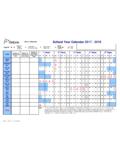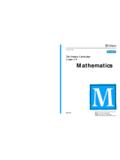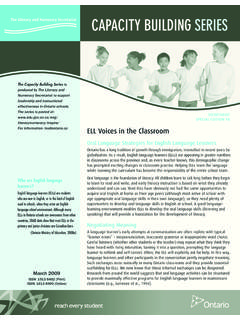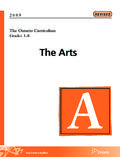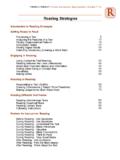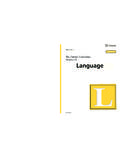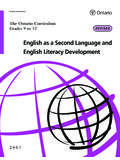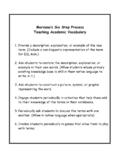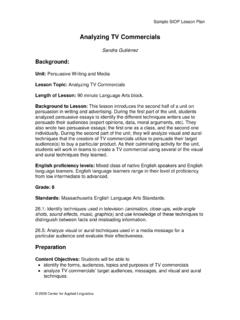Transcription of CONTENTS: Grade 7 Science and Technology
1 Think Literacy: Cross-Curricular Approaches, Grades 7-12. CONTENTS: Grade 7 Science and Technology READING STRATEGIES. Getting Ready to Read: Extending vocabulary (Creating a Word Wall) 3. Reading Different Text Forms: Reading Informational Texts (The Earth's Crust) 23. Reading Informational Texts (Interactions within Ecosystems) 31. Reading Graphical Texts Photographs (Structural Strength and Stability) 37. Reading Graphical Texts Graphs (Pure Substances and Mixtures) 43. Following Instructions (Heat) 49. THIS PAGE NEEDS TO BE REMOVED FROM THE PDF FILE. THINK LITERACY: Subject-Specific Examples Science & Technology , Grade R 7-8 Science , Grade 9 Applied Getting Ready to Read: Extending vocabulary (Creating a Word Wall). Grade 7 Science and Technology Students are required to learn, on average, over 2 000 words each year in various subject areas. Those who have trouble learning new words will struggle with increasingly complex tasks that they encounter in the middle and senior school years.
2 A word wall is a wall, chalkboard or bulletin board listing key words that will appear in a new unit of study, printed on card stock and taped or pinned to the wall/board. The word wall is usually organized alphabetically. Purpose Identify unfamiliar vocabulary and create a visible reference in the classroom for words that will appear often in a topic or unit of study. Payoff Students will: $ practise skimming and scanning an assigned reading before dealing with the content in an intensive way. Students will then have some familiarity with the location and with various elements of the text. $ develop some sense of the meaning of key words before actually reading the words in context. $ improve comprehension and spelling because key words remain posted in the classroom. Tips and Resources $ Word Anticipation Guide: A Word Anticipation Guide allows students to use prediction skills based on context when learning new vocabulary . As students are asked to predict word meaning, they are also asked to confirm their predictions by conferencing with a partner and looking the word up using another source.
3 Consider using the Word Anticipation Guide template found in Student Resources. $ Word Splash Activity: The Word Splash is a visually appealing, random arrangement of key words from the Word Wall around a specific topic. Students could examine the words and write a paragraph predicting the main idea of the unit. Refer to the Student Resources for a sample Word Splash. $ Word Development Guide: The language of Science includes special terms that are recognized as belonging to primarily specific fields, as well as words that in the context of Science are used in new or distinctive ways. Introducing vocabulary carelessly or too soon may result in an ample vocabulary , but only cosmetic understanding of terms for students. To facilitate learning by engaging more of the brain to enhance retention, two senses - writing words and drawing images - are used. Refer to the Student Resources for a Word Development Guide template. $ Word Connections: Word wall words can be mapped to show connections and relationships.
4 Refer to Student Resources for a Word Connections template and a sample Grade 7 model. The teacher should field test the word selection prior to instruction, as this activity is not applicable to all word wall words. $ Word Wall Games: Refer to Teacher Resources for strategies on how to use Word Walls. $ Word Wall Words: Refer to Teacher Resources for strand specific words and definitions. $ There are classroom environments (particularly secondary) where bulletin board or blackboard space is at a premium. Some classrooms are also used for multiple subjects. This may make the development and maintenance of a word wall challenging. Consider the purchase of a portable word wall from commercial suppliers (~$35). Words are written on cards, and placed in see-through pockets of the word wall chart. These charts can be temporarily fastened to a blackboard or bulletin board, and rolled up/taken down each class. Be sure to write the words large enough so students at the back of the room can see them clearly.
5 Do not laminate cards, as glare can result. Alternately, use a display board (similar to those used in Science Fair projects), and attach strips of Velcro to each panel of the board. Attach Velcro also to each word card. $ Students can create graphic organizers/visual words from the word wall to facilitate understanding. Smart Ideas is Ministry-licensed software that could be used for this purpose. Alternately, students could use online sources to collect graphics to represent and further clarify word wall words. $ To align instructional strategies, and assessment and evaluation, be sure to include word wall words in evaluation. Scaffold concept maps and Power notes using word wall words as a beginning. Consider use of cloze activities (fill in the blank), using word wall words, for evaluation purposes. As the unit and year progresses, have students develop sentences and information paragraphs using word wall words. Further Support $ The use of colour is very helpful to visual learners.
6 Examples: Teacher generated word wall words could be one colour, student suggestions could be another colour or all words from one unit could be in the same colour, with cross strand or other unit words in another colour. Use different colours for different concepts ( , use blue for water words, orange for energy words, green for plant words, etc.). $ Use the Internet to find free software to produce use of word match, word search, crossword puzzles and vocabulary bingo. 3. THINK LITERACY: Subject-Specific Examples Science &. 7-8 Science , Grade 9 Applied Technology , Grade R. Getting Ready to Read: Extending vocabulary (Creating a Word Wall). Grade 7 Science and Technology What teachers do What students do Before Notes Before class, preview the text for key vocabulary . Prepare strips of card stock (approximately 4 10 ) for words. Divide students into groups of 3. With their group, find an appropriate space Provide stick-on notes, markers, and masking where they can talk face-to-face and write tape or pins for each group of students.
7 Down the words. Explain to students that together the class will find key vocabulary in the assigned text, and will help each other to understand and spell Find the chapter or get a copy of the assigned the key vocabulary by creating a word wall in text. the classroom that they can refer to for the duration of that particular topic. Distribute Student Resource, Skimming and Scanning to Preview Text, and read and Follow along on the handout as the teacher clarify the techniques with students. reviews skimming and scanning. During Ask students to skim the text to get a general Skim the text, looking at illustrations and sense of what is in it and where it is located. subtitles to get a general idea of the topic of Engage students in some general discussion the text. of the topic, making a few brief notes on the board about big ideas. Direct the students to independently scan the text for unfamiliar words. Scan the text for words they do not know, Ask students to create a personal list of 10 marking them with stick-on notes (optional).
8 Unfamiliar words. and then making a personal list of the words. Direct the students to small groups and ask Compare personal lists. Choose the words for the groups to compare personal lists and a group master list. create a group master list. Distribute eight pieces of card stock (approx. In each group, print the key vocabulary words 4 10 ), markers and pieces of masking tape in large letters on card stock and tape or pin them to the blackboard or bulletin board, to each group. preferably alphabetically. After Lead some discussion of the words and ask students to speculate on their meaning. If Use the glossary in the textbook appropriate, describe prefixes and suffixes dictionary(ies) to find the meaning of the that are unique or common to the subject words. area. Present their words to the rest of the class. Ask each group to look up the meaning of Add the meaning of the words to the cards in their words and then to explain the meaning to smaller letters. the rest of the class.
9 4. THINK LITERACY: Subject-Specific Examples Science & Technology , Grade R 7-8 Science , Grade 9 Applied Student Resource Skimming and Scanning to Preview Text Skimming What is it? When you SKIM, you read quickly to get the main idea of a paragraph, page, chapter, or article, and a few (but not all) of the details. Why do I skim? Skimming allows you to read quickly to get a general sense of a text so that you can decide whether it has useful information for you. You may also skim to get a key idea. After skimming a piece, you might decide that you want or need to read it in greater depth. How do I skim? 1. Read the first few paragraphs, two or three middle paragraphs, and the final two or three paragraphs of a piece, trying to get a basic understanding of the information. Read in this 2. Some people prefer to skim by reading the first and last direction. sentence of each paragraph, that is, the topic sentences and concluding sentences. 3. If there are pictures, diagrams, or charts, a quick glance at them and their captions may help you to understand the main idea or point of view in the text such as Cycle of Life , AIDS , Physical Fitness or Healthy Eating.
10 4. Remember: you do not have to read every word when you skim. 5. Generally, move your eyes horizontally (and quickly) when you skim. Scanning What is it? When you SCAN you move your eyes quickly down a page or list to find one specific detail. Why do I scan? Scanning allows you to quickly locate a single fact, date, name, or word in a text without trying to read or understand the rest of the piece. You may need that fact or word later to respond to a question or to add a specific detail to something you are writing. How do I scan? 1. Knowing your text well is important. Make a prediction about where in a chapter you may find the word, name, fact, term or date. 2. Note how the information is arranged on a page. Will Read in this direction. headings, diagrams, or boxed or highlighted items guide you? Is information arranged alphabetically or numerically as it might be in a glossary, nutrition guide or sequentially as in a sport rulebook? 3. Move your eyes vertically or diagonally down the page, letting them dart quickly from side to side and keeping in mind the exact type of information that you want.
